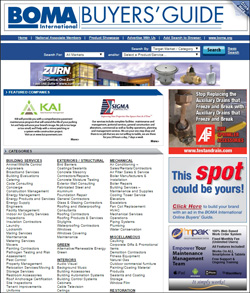Going, Going, Gone: 3 Ways to Create Urgency When Selling Online Inventory

Do you have open inventory on your website that has sat unsold for several months? Is your newsletter being sent with more “advertise here” filler ads than paid ads? Here are three solutions to help you fill these positions and fill them fast:
- Cap advertisers per category
No company likes to be surrounded by a sea of competitors when they advertise. Develop a prospect list of company names and sort by category to determine which segment of prospects are most likely to drive ad revenue. Be very aggressive about the number of companies/ads that you allow per category. Rarely do you want to allow more than two or three companies per category. Advertisers are attracted to the greater exposure that comes with limiting the number of competitors who are invited to advertise on a given Web page, buyers’ guide or newsletter.
A common misconception is this technique will limit your revenue potential. The pushback you may receive from your sales team is, “I could have brought in multiple advertisers in that category!” However, this is not reality – look back historically and you will find that you only have a few companies represented in each category in nearly all forms of advertising/exhibit/sponsorship sales anyway. Creating a better value proposition based on limiting the number of companies invited to participate per category will yield better results in both the short and long term. Capping ads per category allows you to charge a premium, which boosts short-term revenue. Happy advertisers who appreciate the semi-exclusivity of your ad spaces will renew year over year, which requires less staff time to close out a project and produces consistent, increased long-term non-dues revenue.
So where does the urgency come in? It’s all in the delivery! When your sales team says to an advertiser, “We are inviting only two attorneys to be highlighted to our membership in our upcoming newsletter; I would not be surprised if these positions are closed out by the end of the week,” they are telling potential advertisers that your available advertising positions are moving quickly and this enticing opportunity will not last for long.
Fight against the urge to open your website, online buyers’ guide, digital directory or newsletter to “as many companies as possible” and instead focus on creating irresistible advertising opportunities for suppliers to connect with your members.
![]()
Be very aggressive about limiting the number of advertiser that you allow per category.
A common misconception is that limiting the number of advertisers per category will undercut your revenue.
Be prudent about how many rotations you allow for a website banner ad space and don’t rotate ads in your newsletter.
- Limit rotations and ad positions
You may be seeing dollar signs when you consider unlimited adverting rotations on your website or online buyers’ guide. If everyone can participate then the more the merrier, right? Wrong! Remember, online advertising is all about impressions and engagements – how many eyeballs are on the ad and how a viewer chooses to engage with it. If your ad is buried eight deep in a rotation but the average visitor is on the Web page for less time than a full ad rotation, your impressions will be non-existent.
A general rule of thumb from Laura Taylor, director for Naylor Online Solutions, is to allow as many rotations per ad space on a Web page as your site’s traffic will support. For example, if your site attracts 10,000 visitors per month and you want to offer a minimum 2,500 ad impressions per advertiser, set up your ad spaces to allow a maximum of four rotations per space. The number of rotations you allow per space should be directly proportional to your site’s traffic.
You want to avoid rotating ad spaces on a newsletter. Impressions on rotating ad spaces within a newsletter are difficult to track. Most readers skim newsletters too fast, especially on mobile devices, to make any sharing of an ad space worth the advertiser’s money. Focus on placing ad spaces within the natural flow of content so that as readers scroll through a newsletter, they not only see the ads, but view them as a natural, related extension of the editorial.
You don’t want to overload your online media with advertising that will distract from your content, and if the ad positions are endless, there is less value to the advertiser. An effective way for your sales team to convey the value of limited rotations is, “We only have six ad placement opportunities on our website, and at this time ABC Company and ZYX Company have secured two of the positions. We are expecting the remaining positions to be sold out within the next one to two weeks, and we want to give your company the opportunity to be represented to our members before ads are closed out for the next year.” Create urgency by letting the potential advertiser know that rotations are limited, so time to secure their position is short. Add some intrigue by being transparent about who has already secured a spot in the rotation. Give your advertising prospect an honest, realistic timeframe for when you anticipate the positions will be sold so the advertiser knows they need to make their decision quickly.
- Give it away!
So what happens when you tried the two techniques above and you STILL have open inventory?
Give it away! Strategically, of course. Break out the prospect list mentioned above and select your largest pool of advertisers in a specific product/service category. Create a short-term promotion where you give a free ad to one of those companies for a one- to three-month timeframe, either as a lagniappe to another ad package or as an outright freebie. (This is a great way to show appreciation for a member or long-term exhibitor.) When you contact the remaining prospects within that category you can name drop the company that has committed to advertising. Later, you can convert the complementary ad to a paid ad by showing the advertiser the impressions and engagement garnered by their free short-term ad and by emphasizing the value of long-term brand exposure.

David Evans, group publisher for Naylor Association Solutions, recalls using this tactic to sell more ad spaces on the online buyers’ guide for the Building Owners and Managers Association International. “We offered comp ads to some of the largest sponsors in strategic categories with two purposes. First, we wanted to have real ads displayed in the available positions rather than filler. The other goal was to inspire competition from other companies in those categories,” he said. “It worked well. The comp ads were delivered with a message of gratitude for past support of the association. Those vendors found significant value in reaching their target market, and they chose to pay to remain in those spots. Other companies who initially paid to be visible in those same categories continued paying for their ad position.”
Your turn
Open ad spaces are an opportunity to examine your ad placement practices and adjust them so they bring better value to your members and vendors. When you need inventory to sell fast, try one or all of the above tactics for creating urgency and value. You may find a short-term tactic that works well for your association that is worth turning into a long-term ad selling strategy. Share your techniques for creating urgency to close out online ad positions below. What has worked well for your association?
Tara Ericson is a group vice president at Naylor Association Solutions where she oversees Group Publishers and specialized industry market teams, whose primary focus is to ensure Naylor’s association partners are consistently achieving their non-dues revenue goals.

